INDEX
Legal Matters pg.3
Oncology Research ........ pg.4

Mental Health pg.5
Healthy Heart pg.6

Legal Matters pg.3
Oncology Research ........ pg.4

Mental Health pg.5
Healthy Heart pg.6
Whileplaying in the Buffalo Bills
- Cincinnati Bengals game on Monday Night Football on January 2, Bills player Damar Hamlin suffered cardiac arrest after a hit and was administered CPR on the field before being transferred to an area hospital, according to an overnight statement by the Buffalo Bills.
On-site care explanation
Hamlin reportedly experienced a cardiac arrest – when the heart stops abruptly with little or no warning. Early recognition of cardiac arrest improves the person’s chance of survival and is key to starting the correct care of CPR and the appropriate use of defibrillation to restart the heart. The on-site medical team evaluated the situation and appeared to quickly remove his safety pads, begin CPR and apply the automated external defibrillator (AED).
CPR can help keep the heart pumping and blood flowing to vital organs until an electrical shock from a defibrillator is available to restore the heart to a normal heart rhythm. Then the patient can be safely moved for further medical treatment, supportive care, testing to determine what the cause of the arrest may have been and recovery, including both physical and mental health resources for the person and their family.
Cardiac arrest can have several causes. Since Hamlin collapsed immediately following a tackle on the play, one potential cause could be commotio cordis. Commotio cordis is a rare phenomenon from a sudden blunt impact to the chest causing sudden death in the absence of apparent cardiac
damage. The blow to the chest at precisely the wrong time in the cardiac cycle causes an electrical abnormality
thickens the muscles of the heart and can make it more susceptible to an irregular heart rhythm like ventricular fibrillation/tachycardia.
Traumatic stress for responders, observers
Witnessing and responding to a cardiac arrest can be a very traumatic event and may cause lingering psychological impact regardless of the outcome. Lay responders and witnesses may need support and resources to help process their experience.

in the heart resulting in an irregular heart rhythm that cannot pump blood to the body. Immediate CPR and a shock to reset the rhythm can help the heartbeat return to normal function.

Another cause of cardiac arrest that additional tests are likely to attempt to detect or rule out is hypertrophic cardiomyopathy (HCM) or a thickened heart muscle – a more common cause of sudden cardiac death in young people and athletes specifically. The thickened heart can be due to a genetic condition or can be caused by athletic conditioning that
Responders have cited exhaustion, guilt, flashbacks, sleep disturbances, self-doubt, anger, sadness and fear. A positive outcome to performing CPR can mitigate some of the emotional responses; however, psychological responses are wide-ranging and individualized. In situations with a failed resuscitation attempt, PTSD symptom scores were twice as high for responders as those for non-witnesses.
“This was traumatic for everyone, especially Hamlin’s family and teammates but also for so many others involved and witnessing the
Unlike other Texas medical liability insurers, which are investor-owned companies, The Doctors Company remains fiercely independent and dedicated to your interests. Ask yourself, “Do I want an insurer founded by and for physicians that’s guided by my peers? Or do I want a profit-focused insurer that’s directed by Wall Street?”
Join us and discover why delivering the best imaginable service and unrivaled rewards is at the core of who we are.


Organizations with comprehensive cybersecurity programs can (and do) fall victim to cyber-attacks by sophisticated cyber criminals. In any cyber-attack situation, your health care organization should consider the following issues throughout the process of containing and responding to such cyber incident, including the most prevalent form, ransomware.
1. Identify Appropriate Point(s) of Contact An organization must first determine who will be part of the incident response team. While IT team members will serve a vital
role here, the incident response team will need to include others in the organization who have: (a) the ability to make legal decisions; (b) knowledge of business workflows and the short and long term effects of disruptions; and (c) knowledge of the organization’s communication strategy.
2. “Stop the Bleeding” (Identify, Triage, Contain, Eradicate)
The organization should immediately attempt to determine the vectors and scope of the attack. IT should take steps to contain the spread of the incident and determine the best next steps to prevent further business interruption. While systems may be taken offline or sandboxed during this effort, absolutely no systems or devices should be wiped or otherwise cleaned of any data, until legal counsel has authorized and directed such activities.


3. Preserve Evidence Containment
efforts must be implemented quickly, but also carefully.
Kneejerk decisions to “wipe” or “erase” machines to stop an attack can inadvertently “wipe” and “erase” the criminal’s tracks, including critical log data and other important forensic evidence, making it difficult (if not impossible) to later understand how, when, and what the criminal did.
4. Contact Cyber Insurer An organization should promptly notify its cyber insurer regarding coverage evaluation.
5. Engage Outside Counsel
Organizations should bring in legal counsel with expertise in responding to cyber incidents. Outside counsel provides significant insight into responding to cyberattacks, while ensuring the best protection for attorney-client privilege.
6. Engage Forensic Vendor through Counsel Outside counsel should engage the forensic firm to support the position that the work is done under the protection of


treatment. Despite the physical and emotional challenges of cancer, it is possible to find a sense of renewal in the coming year with a fresh outlook, a desire to try new things, or the urge to restart an old hobby.
Be realistic with your resolutions
For cancer patients, attitudes about New Year’s resolutions may be different than in years past. That is because having cancer can be a catalyst for rethinking priorities – what really matters. It does not mean typical, popular resolutions related to health and fitness or diet are not appropriate or relevant. Indeed, improving overall health and focusing your lifestyle on wellness is beneficial to both cancer patients and those who are well. However, other more personal or meaningful issues may take precedence.
Developing a list of resolutions – a life plan for the coming year – can help cancer patients envision their path forward, especially while undergoing
When it comes to making resolutions, think about what is realistic and attainable. Define success on your terms. Resolutions do not need to be tied to a specific timetable. What can you feasibly control? Your words?
Behavior? The choices you make when it comes to spending your time, money, and energy?
Perhaps you want to improve your mood and be more positive or rekindle relationships with family and friends that have gone by the wayside. You can never go wrong with resolutions that positively impact your body and mind such as improving nutrition, staying physically active, or spending more time outdoors.
While you may experience feelings of loss or sadness on your
cancer journey, resolutions focused on activities and results that bring joy can help you find balance and optimism. Do you have a hobby?
As you make resolutions, think about your hobbies. Do you currently participate in an activity you enjoy that takes your mind off cancer for just a few minutes?
A study in New Zealand found that engaging in creative activities such as painting, drawing, or writing can lead to an improved sense of well-being that has long lasting effects such as a more positive mood.
During chemotherapy, patients are often in the clinic for an extended period of time during infusion. A New Year’s resolution could be to take up
a new hobby which will keep your mind occupied and pass the time. Activities such as reading, crossword puzzles, knitting, journaling, drawing, or meditating can be helpful during treatment.
When it comes to starting a hobby or new ‘good’ habit, you may want to keep it simple, especially at the beginning. For example, studies have shown that spending time outside can lead to an improved mood, focus, and overall well-being. Instead of aiming for conquering mountains, you might consider going on a non-strenuous hike or short walk. Gardening, on a manageable scale, is another fulfilling



The Youth Aware of Mental Health (YAM) program has been deployed in more than 30 schools in North Texas, touching more than 20,000 students since its launch in 2016.
UT Southwestern Medical Center is expanding an evidence-based mental health promotion and crisis prevention program for adolescents to schools across Texas after receiving $11.5 million in funding from the state.
The Youth Aware of Mental Health (YAM) program helps teens recognize and better understand feelings and signs of depression and anxiety by sending trained facilitators into schools to lead sessions including discussion and role-playing activities. The program has been deployed in more than 30 schools in North Texas, touching more than 20,000 students
since its launch in 2016. It is now being rolled out throughout Texas in partnership with other health-related institutions as part of the Texas Child Mental Health Care Consortium (TCMHCC).

Madhukar Trivedi, M.D., Professor of Psychiatry, Director of the Center for Depression Research and Clinical Care, and Principal Investigator for YAM at UT Southwestern, said research has shown that YAM results in significantly lower depression and anxiety scores among students, decreasing their risk of suicide.
“As a society, we tend to only focus on depression when there is a crisis. That’s like only focusing on cancer when it becomes stage 4 when the outcomes aren’t great,” said Dr. Trivedi, an Investigator in the Peter O’Donnell Jr. Brain Institute at UTSW.
“Thanks to support from philanthropists and UT Southwestern, we have been able to reach tens of thousands of students so far in North Texas to help prevent suicide. With this new funding from the state, we will be able to reach even more across the state.”
Dr. Trivedi explained that before puberty, the rate of depression – a well-known risk factor for suicide – is about the same for boys and girls. However, during puberty and shortly afterward, the depression rates rise for both genders and eventually double for girls compared to boys, making this stage a particularly vulnerable time for suicidal ideation and attempts.
To help lower suicide risk, Dr. Trivedi and his colleagues were drawn to YAM, a European program that was shown to reduce suicide attempts and severe suicidal ideation by about 50% in a randomized control trial of 11,000 high school students published
in 2015. A different study led by Dr. Trivedi’s team showed a significant reduction in depression and anxiety among students who participated in a three-week YAM session in North Texas schools from 2017 to 2019.
Support for the expansion was provided by the Texas Legislature through the TCMHCC, created in 2019 and recently funded with federal American Rescue Plan Act
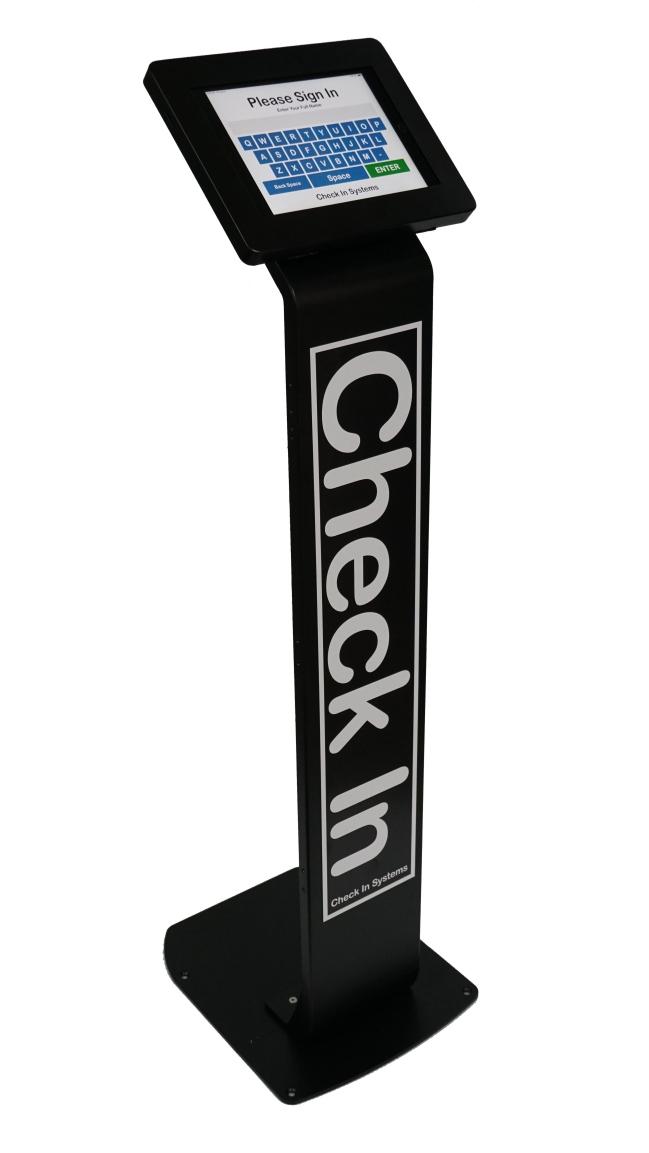
Psychological health can positively or negatively impact a person’s health and risk factors for heart disease and stroke, according to “Psychological Health, Well-Being, and the Mind-Heart-Body Connection,” a new American Heart Association Scientific Statement, published in the Association’s flagship journal Circulation. The statement evaluates the relationship between psychological health and heart health, summarizing ways to help improve psychological health for people with and at risk for
also associated with health behaviors that are linked to an increased risk for heart disease and stroke, such as smoking, lower levels of physical activity, unhealthy diet, being overweight and not taking medications as prescribed.

Due to evidence that connects negative psychological health to heart disease, the statement suggests regular mental health screening for people with or at risk for cardiovascular disease. The authors note that psychological therapy and mind-body programs can lead to better cardiovascular health. Programs that improve psychological

centraltexasfoodbank.org
Presented by
heart disease.
“A person’s mind, heart and body are all interconnected and interdependent in what can be termed ‘the mind-heart-body-connection,’” said Glenn N. Levine, M.D., FAHA, master clinician and professor of medicine at Baylor College of Medicine, chief of the cardiology section at the Michael E. DeBakey VA Medical Center, both in Houston, and chair of the writing committee for the Scientific Statement. “Research has clearly demonstrated that negative psychological factors, personality traits and mental health disorders can negatively impact cardiovascular health.”
Negative psychological health conditions include depression, chronic stress, anxiety, anger, pessimism and dissatisfaction with one’s current life. These conditions are associated with potentially harmful biological responses, such as:
• irregularities of heart rate and rhythm
• increased digestive complaints
• increased blood pressure
• inflammation
• reduced blood flow to the heart Negative psychological health is
health include cognitive behavioral therapy, psychotherapy, collaborative care management approaches, stress reduction therapy and meditation.
Patients’ self-report of general stress as well as work-related stress have been associated with an up to 40% increased risk of developing or dying from heart disease.
Studies have found positive psychological health associated with a lower risk of cardiovascular disease and death. Positive psychological health characteristics include happiness, optimism, gratitude, sense of purpose, life satisfaction and mindfulness. “The data is consistent, suggesting that positive psychological traits play a part in better cardiovascular health,” said Levine.
People with positive psychological health were also more likely to have health factors linked to a lower risk of developing cardiovascular disease:
• lower blood pressure
• better glucose control
We’re all ready to feel good again, but for our food insecure neighbors there’s no vaccine to fight hunger.
The 1 in 5 Central Texas children at risk of hunger deserve a shot at a happy summer.


due to spinal injuries, operated the wheelchair in a cluttered, natural environment to varying degrees of success. The interface recorded their brain activity, and a machine-learning algorithm translated it into commands that drove the wheelchair.

The researchers said this is a sign of future commercial viability for mind-powered wheelchairs that can assist people with limited motor function.
signals to a computer that interpreted each participant’s intentions and translated them into movement.
When people suffer major injuries that end in paralysis, the brain loses pathways to deliver commands to the body and create movement. But the mind remains active, and the interface is able to capture and facilitate movement, as if the brain were talking to the body instead of a computer.
In one of the first studies of its kind, several people with motor disabilities were able to operate a wheelchair that translates their thoughts into movement.
The study by researchers at The University of Texas at Austin and published today in the journal iScience is an important step forward for brain-machine interfaces — computer systems that turn mind activity into action. The concept of a thought-powered wheelchair has been studied for years, but most projects have used non-disabled subjects or stimuli that leads the device to more or less control the person rather than the other way around.
In this case, three individuals with tetraplegia, the inability to move their arms and legs
“We demonstrated that the people who will actually be the end users of these types of devices are able to navigate in a natural environment with the assistance of a brain-machine interface,” said José del R. Millán, professor in the Cockrell School of Engineering’s Chandra Family Department of Electrical and Computer Engineering, who led the international research team. Millán is also a professor of neurology at UT Austin’s Dell Medical School.
The study is additionally significant because of the noninvasive equipment used to operate the wheelchair. The researchers did not implant any kind of device into the participants, nor did they use any kind of stimulation on them.
Participants wore a cap covered with electrodes that recorded brain electrical activity, known as an electroencephalogram (EEG). An amplifying device sent those electrical
Two important dynamics were major contributors to the success of the study. The first involves a training program for the users.
The users were taught methods to visualize moving the chair as if they were imagining moving their hands and feet. As the researchers observed the study participants, they saw changes to their brain activity as they delivered commands.
The second contributor borrowed from robotics. The researchers outfitted their wheelchairs with sensors to understand the surrounding environment. And they also deployed robotic intelligence software that helped the chair fill in blanks in the users’ commands to facilitate accurate and safe movement of the wheelchair.
“It works a lot like riding a horse,” said Millán. “The rider can tell the horse to turn left or to go into a gate. But the horse will ultimately have to figure out the optimal way to carry out those commands.”
This research complements another project Millán worked on, the creation of a new EEG electrode able to be worn for long periods without being replaced.
Long-term electrodes are part of the ultimate goal of these projects. And the researchers plan to embed all the other technology involved directly into the modified wheelchair.
Team members in the project include Luca Tonin of the University of Padova in Italy; Serafeim Perdikis of the University of Essex in the United Kingdom; Taylan Deniz Kuzu, Jorge Pardo, Thomas Armin Schildhauer, Mirko Aach and Ramón Martínez-Olivera of Ruhr-Universität Bochum in Germany; Bastien Orset of École polytechnique fédérale de Lausanne in Switzerland; and Kyuhwa Lee of the Wyss Center for Bio and Neuroengineering in Switzerland.
St. David’s North Austin Medical Center announced it has appointed Jon Baker as the facility’s chief financial officer. Baker, who assumed his new role on Jan. 2, 2023, served as the chief financial officer of St. David’s South Austin Medical Center from 2018 to 2022. “On behalf of St. David’s North Austin Medical Center, I am honored to welcome Jon to our team,” Tom Jackson, chief executive officer of St. David’s North Austin Medical
Center, said. “He brings with him a wealth of knowledge and experience in managing long-term strategies for growth, as well as capital projects. Jon will be a strong addition to our executive team and help support the growth of our hospital in North Austin.” While at St. David’s South Austin Medical Center, Baker oversaw the completion of several major capital projects, including a $13-million bed expansion on the 7th floor and a $25-million
expansion of the hospital’s women’s center. He also played a vital role in the growth of the robotic program and supported the continued growth of the CAR T-Cell Program and the Sarah Cannon Transplant & Cellular Therapy Program, which is on track to perform 170 transplants this year. Prior to his role at St. David’s South Austin Medical Center, Baker served as the chief financial officer of TriStar Hendersonville Medical Center in Hendersonville, Tennessee, where he
was instrumental in developing long-term strategies for growth, including service line expansion, physician recruitment and improved patient experience. Baker holds a Bachelor of Science in Business Administration and Accounting from the University of Tennessee at Chattanooga.

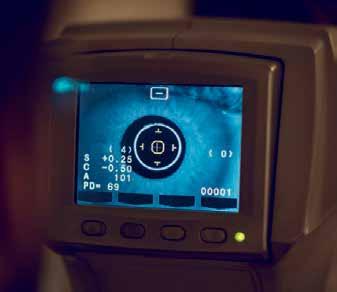



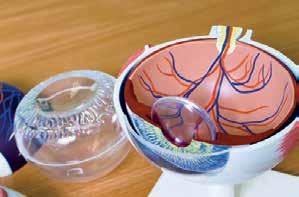





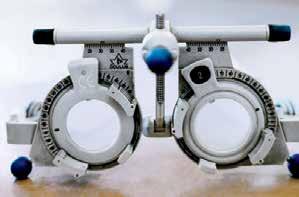

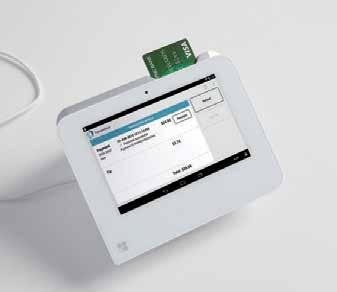



Do you remember why you became a family physician? When you practice in the Army or Army Reserve, you can focus on caring for our Soldiers and their Families. You’ll practice in an environment without concerns about your patients’ ability to pay or overhead expenses. Moreover, you’ll see your efforts making a difference.


is a leading cause of death, dementia and serious long-term disability. According to the American Heart Association, stroke patients also have a greater risk of depression, which negatively affects functional and cognitive recovery. The only Food and Drug Administration (FDA)-approved drug for treating stroke, which is a type of recombinant tissue plasminogen activator, must be given within a specific timeframe after stroke onset and has limited success. To improve stroke outcomes, scientists in the Texas A&M University School of Medicine are pioneering research into the connection between stroke-induced gut permeability, or leakiness, and cognitive impairment.
The Texas A&M team investigated the novel idea whether transplant of intestinal epithelial stem cells (IESCs) from healthy donors could repair the intestinal barrier after stroke and improve stroke outcomes. Results from their preclinical study, published in the journal Brain, Behavior, and Immunity, indicate that IESC transplantation reduced stroke-induced mortality, decreased the volume of dead tissue and gut leakiness, and prevented stroke-induced cognitive impairment.
Two-thirds of stroke patients will develop cognitive impairment, while one-third of all stroke patients will go on to develop dementia, according to recent research, so there is a critical need for more effective stroke therapies that preserve cognitive function after acute stroke and that remain protective in the weeks following.
Although conventional stroke treatment research focuses on the brain, the gut responds early and rapidly to stroke with changes that may precede many of the inflammatory events associated with stroke-induced disease. These changes in the gut, such as increased permeability, likely result in the movement of products that are synthesized in the gut into the blood stream. Many of these products are
toxic and therefore in a position to increase inflammation and exacerbate stroke-induced brain injury.
Evidence from a variety of studies demonstrates that IESCs repair the gut and reduce gut permeability. After a stroke, these repair processes may be critical to preserving cognitive function.
“It is clear that the gut-brain axis is involved in injury following stroke,” said Farida Sohrabji, PhD, Regents Professor, department head for Neuroscience and Experimental Therapeutics and senior author of the study. “Factoring in the effects of gut health on the brain following stroke may allow us to more effectively advance stroke therapies.”
With that in mind, Sohrabji and her team transplanted primary IESCs from healthy donors after stroke in a preclinical model. IESCs from young donors repaired gut architecture and decreased gut permeability and consequently decreasing blood levels of proteins and other molecules that are toxic to brain cells. IESC transplantation also prevented depressive-like behaviors and cognitive impairment in the weeks following the stroke. IESC transplantation from older donors did not improve stroke outcomes, indicating that successful transplantation depends on the age of the donor.
Still at the preclinical stage, this research highlights the importance of early therapeutic intervention after stroke and will guide future directions of the work. “Future studies will investigate refinement of the dosing and timing of the protocol,” Sohrabji said.

Research By Scientists at School of Medicine Indicates That Restoring The Walls Of The Intestine Could Help Prevent Cognitive Impairment After Strokes

Lung nodule biopsies performed with new robotic bronchoscopy technology may be safer and more effective than those done by traditional methods, a study by researchers at UT Southwestern suggests.
UT Southwestern was the first medical center in Dallas-Fort Worth – and among the first in the country – to use robotic-assisted bronchoscopy (RAB) to biopsy pulmonary lesions. Paired with advanced imaging that provides real-time 3D visuals, the technology enables UTSW’s Interventional Pulmonology team to navigate an ultra-thin, ultra-flexible tube with light and camera capabilities into a patient’s lungs to pinpoint and test suspicious abnormalities.
The increased dexterity of the steerable tube makes it possible to safely reach areas in the lungs that couldn’t
be accessed through traditional bronchoscopy and other sampling tools.

A retrospective analysis of 200 of those procedures – the largest cohort studied to date – found that shape-sensing, robotic-assisted bronchoscopy (ssRAB), when combined with technologies such as intra-procedure cone beam CT imaging (CBCT) and radial endobronchial ultrasound, offers high diagnostic accuracy, sensitivity, and specificity with an excellent safety profile. The findings were published in Lung.
“The goal of advanced bronchoscopy is to diagnose lung nodules and perform mediastinal staging in a single procedure, while achieving a comparable diagnostic yield to percutaneous biopsy and at the same time, minimizing complications,”
said Kim Styrvoky, M.D., Assistant Professor of Internal Medicine in the Division of Pulmonary and Critical Care Medicine at UT Southwestern, and Muhanned Abu-Hijleh, M.D., Professor of Internal Medicine in the Division of Pulmonary and Critical Care Medicine. Drs. Styrvoky and Abu-Hijleh are members of the Interventional Pulmonary section at UTSW and the Harold C. Simmons Comprehensive Cancer Center.
“The diagnostic yield of current bronchoscopic techniques is limited,
and there is about a 1 in 4 chance of pneumothorax, or collapsed lung, with percutaneous biopsy,” Dr. Styrvoky said. “Our study showed that this new technology provided accuracy of 91.4%, on par with traditional biopsy methods, while reducing the risk of pneumothorax complication to 1%.”
Lung cancer remains the leading cause of cancer-related deaths for both men and women in the U.S. Each year, between 1.5 million and 2 million
 By Chelsea Couch HHS Texercise Coordinator
By Chelsea Couch HHS Texercise Coordinator
The start of a new year is a great time to make a healthy aging plan, which can include scheduling doctor appointments, getting legal documents in order, preparing emergency kits, etc. Use the information below to create a healthy aging plan that works for you.
Schedule Doctor Appointments
Take a proactive approach to

your health by scheduling your doctor appointments at the start of the new year to make sure health is a priority throughout the year. It’s important to see your primary care physician at least once a year for an overall health checkup. Talk with them about any preventive health screenings you should get.
Download the Texercise Health Chart using the Aging Well Resources Order Form and search “Texercise”
to help you keep track of your health information. Along with setting primary care appointments, use this time to call any medical specialists you see to schedule appointments for the new year.
Get Legal Documents in Order Advance care planning allows you to get legal documents in order and make decisions about the care you would like to receive in the event of a medical crisis or at the end of life. This process includes getting advance directives in place, including living wills, durable power of attorney, medical power of attorney and a do not resuscitate order. When setting
up your advanced care plans, it’s best to talk with your loved ones to make sure they know what your wishes are — especially if there are specific tasks you would like them to take care of for you.
For more information on advance care planning, download the HHS Texas Talks – Advance Care Planning resources using the Aging Well Resources Order Form and visit the National Institute on Aging website.
Having an emergency kit can help make sure you have everything you need during a disaster event. The new year is a great time to check your emergency kits to make sure everything is in order, including checking food expiration dates, testing batteries, locating all medications and testing flashlights.
Visit the FEMA website for more information about emergency kits and use their Ready Checklist for emergency supplies to start putting your kit together.
• The Texas Health and Human Services Commission Age Well Live Well (AWLW) campaign

Continued from page 5
funds directed to the state to address fallout from the COVID-19 pandemic, including mental health issues. Thus far, more than 100 facilitators have been trained for the YAM expansion from health-related institutions including UT Dell Medical Center in
Continued from page 6
• less inflammation
• lower cholesterol
Liz Youngblood, President Baylor St. Luke’s Medical Center & SVP/ COO St. Luke’s Health Texas Division,
Austin, Texas A&M, Texas Tech, UT Medical Branch at Galveston, and UT Health Science Centers in Houston, San Antonio, and Tyler. Once trained, the facilitators bring the program to schools in their communities.
By providing mental health education to all students in a high
school or middle school class, rather than just responding to those considered at risk or already in crisis, students are taught how to recognize depression and anxiety symptoms in themselves and their peers, Dr. Trivedi explained, lowering suicide risk before students are in danger.
“Mental health and wellness are essential to student success,” Dr. Trivedi said. “Increased rates of anxiety and depression, and learning loss as a result of the pandemic, underscore that this is a pivotal time for our children. If we ignore this, we ignore it at our own peril.”
adds that “Wellness is more than simply the absence of disease. It is an active process directed toward a healthier, happier and more fulfilling life, and we must strive to reduce negative aspects
of psychological health and promote an overall positive and healthy state of being. In patients with or at risk for heart disease, health care professionals need to address the mental wellness of
Continued from page 10
“A systematic study of aging stem cells would also be important to explain why older patients experience more severe strokes.”
Sohrabji, a neuroscientist with significant contributions to the literature on stroke pathogenesis, explained that this preclinical study was
Continued from page 11
pulmonary nodules – spots or related abnormalities – are identified through diagnostic imaging. UT Southwestern is using robotic bronchoscopy in cases where traditional biopsies present a higher risk of complications, including patients with lesions deep in the lung, near major blood vessels, or adjacent to a portion of diseased lung.
This was UTSW’s first
spearheaded by Kathiresh Kumar Mani, PhD, an associate research scientist in her lab. Mani, who is trained in gut biology, received a postdoctoral grant from the American Heart Association in support of this project. Combining their expertise has allowed them to move stroke therapy research into new
territory with exciting results. They also received a generous grant from the WoodNext Foundation that is facilitating their innovative research.
“Ultimately, this research is expected to advance development of novel therapies that target and repair the intestinal epithelium to help mitigate
the patient in tandem with the physical conditions affecting the body, such as blood pressure, cholesterol levels, chest pain, etc.”
Continued from page 12
highlights the importance of aging well and promotes increased community preparedness by providing awareness and activities for people and communities to be healthy, be connected and be informed. Visit the Age Well Live
reported study detailing the usage of ssRAB-CBCT, but other trials focusing on various aspects of robotic bronchoscopy are underway.
If further studies confirm the findings, ssRAB-CBCT has the potential to become the standard of care for targeted lung sampling, Drs. Styrvoky and Abu-Hijleh said.
Other UTSW researchers who
contributed to this study include Audra Schwalk, David Pham, Hsienchang T. Chiu, Kristine Madsen, Stephen Carrio, Elizabeth M. Kurian, and Luis De Las Casas.
All Interventional Pulmonary faculty at UT Southwestern, including Drs. Abu-Hijleh, Chiu, Styrvoky, and Schwalk, as well as bronchoscopy support staff in UTSW’s Endoscopy
stroke disability,” Sohrabji said, “but the premise—that gut stem cells might be therapeutically valuable outside of the gut—could be considered for a much greater variety of neurological disease.
Well website to learn more and use the Aging Well Resources Order Form to download AWLW
resources.
• Area agencies on aging (AAA) assists people aged 60 and older and their caregivers in seeing if they
qualify for free services, such as home-delivered meals, homemaker assistance, and evidence-based health and wellness interventions.
Call 800-252-9240 to be connected to the nearest AAA.
• Aging and Disability Resource
unit, received training related to robotic bronchoscopy procedures through Intuitive Surgical Inc. This included lab procedures and equipment, following standards of care, and the credentialing process. Dr. De Las Casas has served as a consultant for Intuitive since 2021.
Centers are part of the No Wrong Door system and help streamline access to long-term services and support for the whole family. To learn more about the full range of available long-term supports in Texas, call 855-937-2372.
Continued from page 1
event. More than 70% of cardiac arrests that do not happen in the hospital, occur in a home where access to medical professionals and an AED is not as readily available,” said Mariell Jessup, M.D., FAHA, chief science and medical officer of the American Heart Association. “Recognizing a cardiac arrest, calling 911 immediately, performing CPR and using an AED as soon as it is available are critical for survival. Statistically speaking, it is likely that the person will need to be helped by a family member or a friend in order to survive.”
Having community members trained in CPR and AEDs in public
Continued from page 3
attorney-client privilege.
7. Determine Scope The investigation should specifically address whether the criminal both accessed (e.g., viewed) or acquired (e.g., downloaded or exfiltrated) data, as access alone creates legal obligations pursuant to many state and federal laws. The investigation should further determine all of the identifiers for any individuals (e.g., patients, beneficiaries, employees, donors, research subjects, etc.) whose data may be involved in the cyberattack.
8. Coordinate with Law Enforcement In most cases, law enforcement – specifically, the FBI – should be notified by legal counsel as part of the response to the cyberattack. Even if law enforcement assistance is not needed, having notified law enforcement can be important later, if the organization finds itself in the position of needing to pay a ransom or report the cyberattack to state or federal regulators.
Continued from page 4
outdoor activity – a few tomato or herb plants in conveniently placed containers may work better for you than tilling a huge garden plot. Allow yourself to be flexible. What is of interest to you today can change
spaces can increase the chances of survival. The rate of bystander CPR in North America is estimated at only 39-44%, and only about 1 in 10 people survive an out-of-hospital cardiac arrest. Improving the rate of bystander CPR is critical to increasing survival from out-of-hospital cardiac arrest (OHCA).
The skill to perform CPR and use a defibrillator are the foundational components of preparing laypeople to respond to cardiac arrest. People also need to feel emotionally prepared to respond and be able to cope with the aftermath of actually performing CPR.
Resources for learning CPR
Each year in the United States, an estimated 350,000 people experience sudden cardiac arrest in the community. Anyone who witnesses a
cardiac arrest in the community (i.e., not in a hospital) can perform CPR. Roughly 70% of cardiac arrests that do not happen in the hospital, occur in homes and private residences, therefore, a friend or family member is mostly likely to be the person who needs to take action. CPR, especially if performed immediately, can double or triple a cardiac arrest victim’s chance of survival. For adults and adolescent children, Hands-Only CPR is an easy-to-learn skill that requires only two steps: call emergency services and push hard and fast in the center of the chest at a rate of 100-120 beats per minute. Learn more at heart.org
Published by Texas Healthcare Media Group Inc.
Director
Richard W DeLaRosa
Senior Designer
Jamie Farquhar-Rizzo
Web Development
Contacting law enforcement may also reduce the risk that a regulator, including the OFAC, finds an organization’s officers have obstructed justice or worked to activity hide criminal activity (i.e., a cyberattack).
9. Analyze Notification
Based on what is learned about the incident through the forensic investigation, the organization must assess whether notifications to patients, employees, contractors, donors, research subjects, business partners, vendors, other individuals, or regulatory bodies are legally required (e.g., under HIPAA) or otherwise appropriate. Where notice is required, the timing and form of such notice, as well as the particular content of the notice, will be as set forth in applicable law or contracts. In some cases, notification to media and/or notice published on the victim’s website may also be required.
10. Prepare for Regulatory Investigations HHS Office for Civil Rights (OCR) and the State Attorneys General may open an
investigation into any incident involving unauthorized access or acquisition of protected health information under HIPAA, and OCR will automatically do so, if an incident involves five hundred or more individuals’ protected health information. There are many other regulators at the state and federal (and international) level, who may have jurisdiction over issues related to the cyberattack, and from whom the organization may receive inquiries.
With the help of legal counsel, taking the appropriate steps outlined above during the response to any cyberattack, puts an organization in a better position to handle inquiries from individuals, business partners, the media, and regulators and defend against potential claims. Also, do not wait until a cyber-attack actually occurs to practice responding—engage legal counsel now to assist your teams with tabletop exercises to prepare for such attacks, and to address all of the important issues discussed above.
Lorenzo Morales Distribution Brad Jander Accounting Liz Thachar Office: 512-203-3987
For Advertising advertising@ medicaltimesnews.com Editor editor@medicaltimesnews.com
Austin Medical Times is Published by Texas Healthcare Media Group, Inc. All content in this publication is copyrighted by Texas Healthcare Media Group, and should not be reproduced in part or at whole without written consent from the Editor.

and may be impacted by your physical wellness during cancer.
Focus on your mental health in the new year
Emotional and mental health matter when dealing with cancer. Feelings may change by the day, hour, or minute. Thoughts may get stuck in a rut. Actively consider your mental health as you make resolutions. Journaling gratitude is one way to
create a habit to improve your mental health. Jot down one or two things you are thankful for each day and review your list when times are tough. No matter what the new year brings, make it your goal to find peace and a sense of renewal in your body and mind as you continue your cancer journey.
Austin Medical Times reserves the right to edit all submissions and assumes no responsibility for solicited or unsolicited manuscripts. All submissions sent to Austin Medical Times are considered property and are to distribute for publication and copyright purposes.
Austin Medical Times is published every month P.O. Box 57430 Webster, TX 77598-7430

1. Slow down.
Plan ahead and allow enough time to get the most important things done without having to rush.
3. Let worry go.
The world won’t end if a few things fall off of your plate. Give yourself a break and just breathe
4. Laugh it up.
Laughter makes us feel good Don’t be afraid to laugh out loud, even when you ’ re alone.
2. Snooze more. 6. Get organized.
A daily dose of friendship is great medicine Make time to call friends or family so you can catch up
Use “to do” lists to help you focus on your most important tasks and take big projects one step at a time.
Volunteer your time or spend time helping out a friend Helping others helps you
5. Get connected. 8. Be active every day.
Exercise can relieve mental and physical tension. Find something you think is fun and stick with it.
Too much alcohol, tobacco or caffeine can increase blood pressure. Cut back or quit to decrease anxiety.
10. Lean into things you can change.
Make time to learn a new skill, work toward a goal, or to love and help others
Try to get seven to nine hours of sleep each night To fight insomnia, add mindfulness and activity Learn
